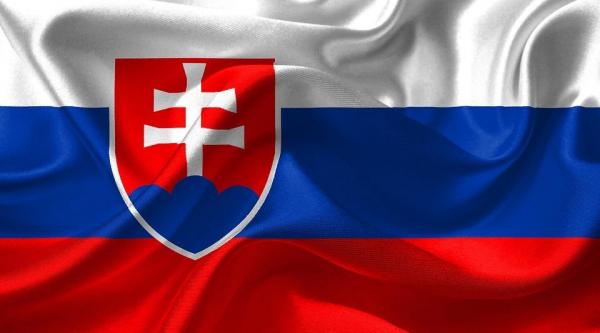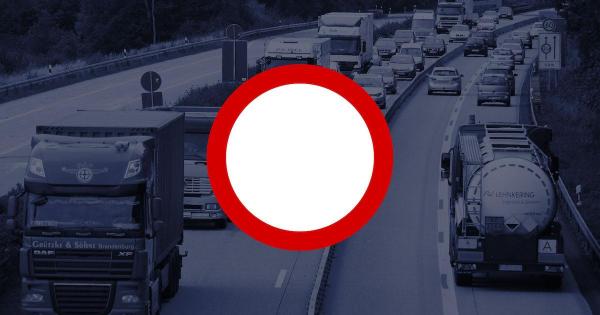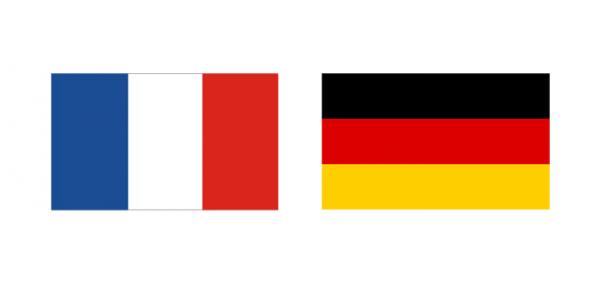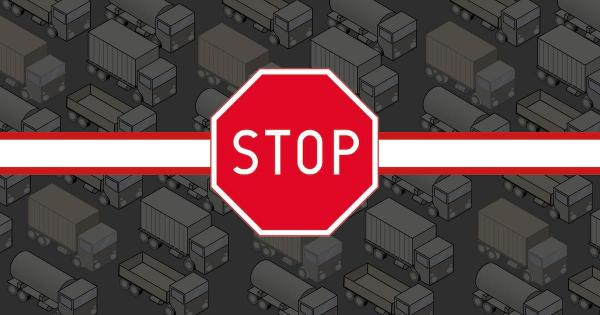
Neue Einreisebestimmungen und geschlossene Grenzübergänge mit Polen
Ab dem 15. Februar um 6:00 Uhr führt die Slowakei verstärkte Kontrollen ein, um die Einhaltung von Quarantänemaßnahmen und Freizügigkeitsbeschränkungen sicherzustellen, und in Grenzregionen Kontrollen, um die Einhaltung der Regeln für Besucher sicherzustellen, die aus dem Ausland in die Slowakei einreisen.
Daher werden die folgenden polnisch-slowakischen Grenzübergänge für den Personen- und Güterverkehr gesperrt:
– Radoszyce-Palota
– Ożenna-Nižná Polianka
– Muszynka-Kurov
– Leluchów-Čirč
– Szczawnica-Lesnica
– Niedzica-Lysá nad Dunajcom
– Łysa Polana-Tatranská Javorina
– Chochołów-Suchá Hora
– Winiarczykówka-Bobrov
– Ujsoły-Novot ‘
Ab 6.00 Uhr, am 17. Februar, müssen polnische Staatsbürger, die in die Slowakische Republik einreisen, nach vorheriger obligatorischer Registrierung auf einer speziellen Website für einen Zeitraum von 14 Tagen entweder durch Selbstisolierung oder in Quarantäne-Unterkünften unter Quarantäne gestellt werden. Ausländer, einschließlich Bürger Polens und anderer EU-Länder, die sich in den letzten 14 Tagen in Ländern aufgehalten haben, in denen ein hohes Risiko für eine Coronavirus-Infektion besteht (einschließlich Polen, Österreich, der Tschechischen Republik, Ungarn und der Ukraine), dürfen das Hoheitsgebiet der Slowakischen Republik durch Grenzübergänge mit Österreich, der Tschechischen Republik, Polen und Ungarn und Luftgrenzübergänge in der Slowakei
• erst nach Vorlage eines negativen Antigen-Testergebnisses (nicht älter als 72 Stunden), das in Laboratorien in der Tschechischen Republik oder Österreich durchgeführt worden ist, oder
• nach Vorlage einer negativen RT- PCR-Testergebnisse (nicht älter als 72 Stunden), oder
• müssen sich selbst isolieren, bis sie ein negatives COVID-19-Testergebnis erhalten (oder nicht länger als 14 Tage, wenn keine Krankheitssymptome vorliegen).

Entry to Latvia only with a test
From February 15, professional truck drivers who have spent more than 72 hours in a country with a high risk of COVID-19 infection in the last 14 days (the list of these countries is published every Friday at www.spkc.gov.lv; currently it includes all European countries except the Vatican and Iceland) are required to undergo a Covid-19 test before coming to Latvia. In addition, they have to complete an online form no earlier than 48 hours before crossing the Latvian border.
The test result in English, French, German or Russian must be presented on request. A test is also required from drivers who are only passing through Latvia. Only PCR test results are accepted! More information can be found here (https://www.gov.pl/web/lotwa/od-1501-wjazd-na-lotwe-dozwolony-tylko-negatywnym-testem-na-covid-19) (only in Polish)
❗ From February 15 transit journeys through the territory of the Republic of Latvia may take no more than 12 hours from the completion of the online form available at covidpass.lv.
Exceptions:
• haulier’s employees, crew members – freight transport or technical crew – can pass through the territory of the Republic of Latvia within a period of 72 hours,
• international transport passengers – within 48 hours,
• passengers of an aircraft that passes through the territory of the Republic of Latvia without leaving the airport area and stays there for no more than 24 hours, if it can provide confirmation of the transit flight,
• there is no hourly limit for ship and aircraft crew members or crew members who need to get to or from their place of work on board a ship or aircraft.
When completing the online form (covidpass.lv), a person intending to pass through the Latvian territory must indicate this fact at the beginning of the questionnaire.
From 11 to 25 February, travellers from EU Member States, the European Economic Area, the Swiss Confederation and the United Kingdom will be allowed to enter Latvia only in urgent cases:
• work
• education, studies,
• family reunification,
• receiving medical services,
• transit,
• escorting minors,
• return to a permanent place of residence,
• funeral.
❗❗ ALL persons crossing the border of the Republic of Latvia (also in transit) are required to complete the online form at the covidpass.lv website and present the QR code generated upon completion to border guards. The form is also obligatory for those involved in the transport of goods or passengers and should be completed no earlier than 48 hours before crossing the Latvian border.
Information provided in the form will be automatically forwarded to the State Police, Border Guard and the Center for Disease Prevention and Control (SPKC). Personal data will be stored for 30 days for the purpose of epidemiological protection and for identifying contact persons. After 30 days, all personal data will be automatically deleted.
Failure to comply with these requirements can be punished with a fine of up to EUR 2,000 for a natural person and up to EUR 5,000 for a legal person.

Einreise nach Lettland nur mit einem Test
Ab dem 15. Februar Lkw-Fahrer, die sich in den letzten 14 Tagen mehr als 72 Stunden in einem Corona-Risikoland aufgehalten haben (die Liste dieser Länder wird jeden Freitag unter www.spkc.gov.lv veröffentlicht; derzeit umfasst es alle europäischen Länder außer dem Vatikan und Island), müssen sich einem PCR-Test unterziehen, bevor sie nach Lettland kommen. Außerdem, innerhalb von 48 Stunden vor der geplanten Einreise müssen alle Reisenden ein elektronischer Fragebogen ausfüllen, der auf der Webseite covidpass.lv abgerufen werden kann. Der nach der Registrierung erhaltene QR Code ist den Grenzbeamten bei der Einreise vorzuzeigen und während der gesamten Dauer des Aufenthaltes für Kontrollen bereitzuhalten.
❗ Ab dem 15. Februar müssen Personen, die Lettland auf der Durchreise durchqueren, dies innerhalb von 12 Stunden nach Einreichung des Bestätigungsfragebogens auf der Website „covidpass.lv“ tun. Weitere Informationen zu den Einreisebestimmungen finden Sie in englischer Sprache: hier
Ausnahmen:
• Mitarbeiter, Besatzungsmitglieder des Spediteurs – Güterverkehr oder technische Besatzung – können innerhalb von 72 Stunden das Gebiet der Republik Lettland durchqueren.
• internationale Transportpassagiere – innerhalb von 48 Stunden,
• Passagiere eines Flugzeugs, das das Gebiet der Republik Lettland durchquert, ohne das Flughafengebiet zu verlassen, und sich dort nicht länger als 24 Stunden aufhält, wenn es den Transitflug bestätigen kann;
• Es gibt keine stündliche Begrenzung für Schiffs- und Flugzeugbesatzungsmitglieder oder Besatzungsmitglieder, die an Bord eines Schiffes oder Flugzeugs zu oder von ihrem Arbeitsplatz gelangen müssen.
Vom 11. bis 25. Februar dürfen Reisende aus der Europäischen Union (EU), dem Europäischen Wirtschaftsraum (EWR), der Schweiz und dem Vereinigten Königreich nur für dringende und wichtige Zwecke nach Lettland einreisen. Alle nicht wesentlichen Reisen nach Lettland sind verboten mit Ausnahme folgender Reisezwecke:
• Arbeit,
• Studium,
• Familienzusammenführung,
• medizinische Behandlung,
• Reisen auf der Durchreise
• Begleitung reisender Minderjähriger
• Rückkehr zum ständigen Wohnort
• Teilnahme an einer Beerdigung
Die im Formular enthaltenen Informationen werden automatisch an die Staatspolizei, den Grenzschutz und das Zentrum für die Prävention und die Kontrolle von Krankheiten (SPKC) weitergeleitet. Personenbezogene Daten werden zum Zwecke des epidemiologischen Schutzes und zur Identifizierung von Kontaktpersonen 30 Tage lang gespeichert. Nach 30 Tagen werden alle persönlichen Daten automatisch gelöscht.
Für das Nicht-Ausfüllen des Formulars wird eine Geldstrafe von bis zu 2.000 EUR für eine natürliche Person und bis zu 5.000 EUR für eine juristische Person verhängt.

Sonntagsfahrverbot für Lkw wird in Bayern bis Ende Februar ausgesetzt
Hintergrund sind laut Herrmann die derzeitigen Grenzkontrollen zu Tschechien und Tirol. Verzögerungen entstünden beispielsweise, wenn Lastwagen-Fahrer den erforderlichen negativen Corona-Testnachweis nicht dabei hätten oder die digitale Einreiseanmeldung fehle. Herrmann appellierte an die Transportunternehmen und Fahrer, sich vor dem Grenzübertritt von Tschechien und Tirol nach Bayern um die notwendigen Formalitäten zu kümmern. Das Sonn- und Feiertagsfahrverbot gilt von 0.00 bis 22.00 Uhr für eine Vielzahl von Transportgütern mit schweren Lkw. In Bayern war das Verbot bereits zeitweise im Sommer 2020 ausgesetzt, um die Versorgungsketten während der Corona-Krise aufrechtzuerhalten.

UK – Get a coronavirus (COVID-19) test if you’re an HGV or van driver
You must take a coronavirus (COVID-19) test before you leave the UK for some countries – check which countries require them and how to get a free test.
Changes to testing for journeys to France
Drivers returning to France from the UK on a round-trip who have spent less than 48 hours in the UK do not need to test negative for coronavirus before travelling. Cross-channel operators will give drivers evidence of the time of their trip to the UK. Drivers will need to show this at check-in for the return journey.
French authorities will recognise proof of a negative coronavirus test taken in Ireland if the test was taken less than 72 hours before departure from the UK for France.
Check if you need a test
You must test negative for coronavirus before you travel from the UK to:
– Denmark
– France (you do not need to take a test if you are returning to France after spending less than 48 hours in the UK)
– Germany
– Netherlands
Check FCDO travel advice for any country you’re planning to enter.
You must take the test before you leave the UK. You’ll need to show your certificate of proof of a negative test at the UK and EU border, as well as to the carrier.
You must do this if you’re:
– a heavy goods vehicle (HGV) driver or HGV crew
– a van or other light goods vehicle (LGV) driver
It applies to both UK and non-UK drivers.
If you test negative, you’ll get a certificate of proof. You’ll need to show this before you can leave the UK.
You can get a free coronavirus test if you’re a professional coach driver who is driving abroad for work.
When to get a test
If you need a test, you must get it before you leave the UK.
Each country sets its own rules for when you must take your test.
Get tested before you reach the port you’re leaving the UK from.
When you must take the test:
Denmark – In the 24 hours before you arrive in Denmark.
France – In the 72 hours before you depart the UK.
You do not need to take a test if you are returning to France after spending less than 48 hours in the UK.
You can take a test in Ireland if it is carried out in the 72 hours before you depart the UK for France.
Germany – In the 48 hours before you depart the UK.
Netherlands – In the 24 hours before you depart the UK.
Where to get a test
You can either get:
– a private test from your company (if it has bought them from an authorised test provider)
– a free coronavirus test at most haulier advice sites
You cannot use an NHS test result to leave the UK because it does not give you the proof you need to travel.
Most haulier advice sites are:
– located at motorway services and truck stops
– open between 6am and 9:30pm, 7 days a week
Visit a site as early as possible in your journey. Check the latest traffic updates from Highways England to help you plan.
If you’re leaving the UK via Kent, you should take a test before you reach Kent. This applies if either:
– you’re travelling via the Channel ports or Eurotunnel
– you’re carrying dangerous goods
Check the opening times for the site you want to use before you travel.
You do not need to book in advance.
If you’re using the Port of Dover or Eurotunnel
A negative test result remains valid for entry to France for 72 hours. This gives you enough time to get tested before you set off, or at the start of your journey.
Get a test before you enter Kent. You’ll then be fast-tracked past any queues.
You’ll also need a valid Kent Access Permit.
If you’re carrying dangerous goods
You must take a coronavirus test before you enter Kent if you’re carrying:
– explosives
– polymerising substances
– infectious substances
– radioactive substances
– goods that are of high consequence for terrorism
This is because these types of loads are not allowed at the sites in Kent. You’ll be refused access if you’re carrying them.
Check with your transport manager or consignor if you’re not sure if your goods fall into any of these categories.
When you get to the test site
Protect yourself and others by keeping a safe distance and wearing a face covering.
Avoid leaving your vehicle except to use the rest facilities or when asked to by a member of staff.
If you already have a valid negative test, let a member of staff know. If you do not need to take a test, you’ll be directed to your departure point and will be able to continue your journey.
If you do need to take a test, a member of staff will give you a test kit.
Take the test
The test involves taking a swab at the back of your throat and the inside of your nose using a long cotton bud.
You do the test yourself. Staff will watch you, and the test kit has instructions for you to follow.
After you’ve taken the test
Return to your vehicle and wait for 30 minutes for the results when you’ve taken the test.
If your test result is negative
You need to collect your certificate to prove your negative result if you test negative.
Staff will then direct you to your departure point and you’ll be able to continue your journey.
You’ll need to show your test result to:
– enforcement officers in the UK
– border officials in the countries that require them
Keep the result safe. If you lose it, you’ll need to take another test.
If your test result is positive
You cannot continue your journey if the test result is positive.
What you do next depends on where you can safely self-isolate.
A small number of test sites will immediately carry out a second test to confirm the result if you’ve tested positive for coronavirus.
If you can safely self-isolate in the UK
You can safely self-isolate in the UK if you have a home in the UK, or if you can stay with family or friends in the UK.
1. Return your vehicle to your depot or place of work. Do not share the vehicle with anyone.
2. Go home and self-isolate. Your household needs to self-isolate too.
3. Book a free NHS coronavirus test within 48 hours to confirm the test result.
If the NHS test result is positive, you and your household will need to complete the full self-isolation period.
If your NHS test result is negative, you and your household can end your self-isolation period.
If you cannot safely self-isolate in the UK
If you do not have anywhere to stay in the UK, it means you cannot safely self-isolate.
1. You’ll be given hotel accommodation so you can safely self-isolate and support staff will arrange a second coronavirus test for you to confirm the result.
2. You’ll be directed to a hotel to self-isolate.
3. Park your vehicle in the hotel car park.
4. Arrange with your company for any perishable or dangerous goods to be picked up by another driver. Staff at the hotel will tell you how to do this safely.
Support staff will arrange for you to have a second coronavirus test to confirm your result. Most people get their result within a few days.
– If your second test result is negative, staff will direct you to a test site for another coronavirus test. Once your negative test has been confirmed, you’ll receive a certificate and will be free to continue your journey.
– If your second test result is positive, you’ll have to self-isolate at the hotel for 10 days. After 10 days, you’ll receive a certificate to show you have completed your isolation period and will be free to continue your journey.
You will not have to pay for the hotel accommodation and food.
You should not leave the hotel without permission while you’re self-isolating.
Other documents you need for international road haulage
You need to have the right:
– driver documents
– vehicle documents
You must have a valid Kent Access Permit if your HGV is both:
– leaving Great Britain from the Port of Dover or the Eurotunnel
– over 7.5 tonnes
The permit also makes sure you have the right documents for EU import controls.

Czech Republic: temporary relaxation of drivers’ hours rules
The relaxation follows border restrictions introduced by Germany.
The relaxation is in effect until and including March 15. It applies to all drivers involved in international transport of goods from the Czech Republic to Germany, provided that the safety of drivers and road traffic are not endangered.
The following rules will be relaxed temporarily for drivers mentioned above:
Article 6 (1) 1: the maximum daily driving limit has been increased from 9 to 11 hours;
Article 6 (1) 2: the maximum weekly driving limit has been increased from 56 to 60 hours;
Article 8 (2) 1: the daily rest requirement has been reduced from 11 to 9 hours;
Art. 8 sec. 6: the start of the weekly rest period has been postponed by another 24-hour period to 7 periods since the end of the previous weekly period.
After using the relaxation, the driver is obliged to make a manual entry on the back of the printout / record sheet without delay, stating the place and the reason for using the relaxation. This documentation has to be presented during an inspection, together with other supporting documents, to verify the use of the relaxation has been justified.

Poland: travellers arriving from the Czech Republic and Slovakia have to self-isolate
The measure announced by Poland’s Minister of Health on Wednesday (24 Feb) will come into effect on February 27.
In view of the epidemic situation in the neighbouring countries, all people returning from the Czech Republic and Slovakia, including car travellers, will have to self-isolate. The requirement does not apply to people who have received two doses of the COVID-19 vaccine or those who have tested negative. The test has to be performed before crossing the border. The test result is valid for 48 hours.
❗ It is highly likely that professional drivers will be exempt from the new restriction, but at the moment no information to this effect has been published by the Ministry. We are following the situation and will keep you updated about any changes.

France on Germany\’s list of countries with new virus variants
New information on the designation of international risk areas, published in 28 February, is associated with changes and new obligations for professional drivers entering Germany from the French department of Moselle.
❗ Drivers who within 10 days of entering Germany have visited a country where the new Covid-19 variant has appeared, which now includes: Great Britain, Ireland, Botswana, Brazil, Lesotho, Malawi, Mozambique, Portugal, Zambia, Zimbabwe , Slovakia, the Czech Republic and Austria – the federal state of Tyrol (except the political district of Lienz (East Tyrol), the municipalities of Jungholz and the Riss valley in the municipalities of Vomp and Eben am Achensee) and from March 2, the French department of Moselle.
❎Destination traffic: Prior registration is required. Register at https://www.einreiseanmeldung.de/#/ before entering the country. The digital form is available in many languages.
❎ Negative result of a COVID-19 test is required!
There are no exceptions to the above requirement for those who within the last 10 days have come from or stayed in areas where new virus variants have appeared. Persons who are professionally involved in transporting people or goods across borders by road, rail, ship or plane are therefore obliged to undergo a test and present a negative test result upon entry.
Earlier restrictions remain unchanged, details available HERE (https://etransport.pl/wiadomosc63135.html).

Germany prolongs border controls again
The temporary checks at Germany’s borders with Austria and the Czech Republic will continue initially until 17 March.
Germany’s Minister of the Interior, Horst Seehofer, has prolonged internal border controls and entry restrictions, which are now scheduled to be in effect from March 4 to March 17.
The Czech Republic and the Austrian province of Tyrol (except for the district of Lienz, the municipality of Jungholz and the Rißtal valley within the municipalities of Vomp and Eben am Achensee) remain classified as areas of virus variants of concern. Only German nationals and foreigners living or holding a German residence permit are currently allowed to enter Germany from these regions. The entry restrictions do not apply to truck drivers and foreign commuters recognized as essential workers. However, they must provide a negative test result taken within the past 48 hours. Initially, these rules were introduced for a period of 10 days.
The federal police are monitoring compliance with the stricter entry regulations at the above-mentioned border sections at various points and times, paying particular attention to international or supra-regional routes.

Italien setzt Lkw-Fahrverbote im März aus
Mit einem am 4. März erlassenen Dekret hat das italienische Verkehrsministerium die Aussetzung des Fahrverbots für Fahrzeuge mit einem Gesamtgewicht von über 7,5 Tonnen verlängert.
Demnach sind zwei bevorstehende Lkw-Sonntagsfahrverbote im März (14, 21) aufgehoben worden.
Die Entscheidung wurde durch die Coronavirus-Krise und die Notwendigkeit einer Verbesserung des Verkehrssystems und des Verkehrsflusses motiviert.